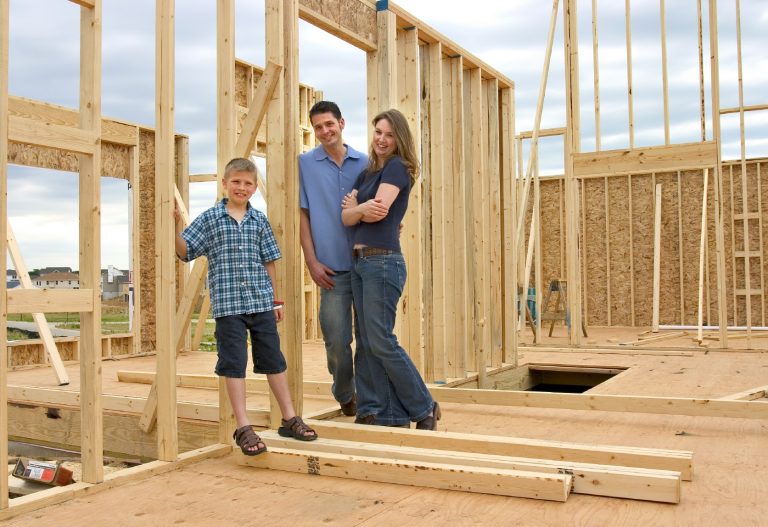The Essential Guide to Building Your Home
I. Introduction
A. Definition of a Dream Home
A dream home is not defined solely by its structure but by how it reflects your lifestyle, values, and vision for the years ahead. To some, this might be a contemporary loft in the city; to others, a rustic retreat in nature or a green, energy-efficient dwelling.
B. Importance of Planning and Preparation
Turning your vision of a perfect home into reality is an exciting endeavor, yet it requires careful planning. Without proper planning, even the most inspiring vision can face costly mistakes or delays. Careful preparation ensures that the final result meets both your expectations and practical needs.
C. Overview of the Article’s Structure
This guide covers every step of the journey: from budgeting and choosing the perfect location, to working with designers, selecting a builder, managing construction, and finally moving in.
II. Pre-Construction Planning
A. Establishing a Budget
-
Determining Financial Limits – Begin by assessing your total financial capacity, including savings, loans, and financing options.
-
Allocating Funds – Divide resources across land, materials, labor, permits, design fees, and a contingency fund for unexpected costs.
B. Choosing a Location
-
Factors to Consider – Accessibility, proximity to schools and workplaces, community amenities, and future growth of the area.
-
Researching the Real Estate Market – Study property values and zoning laws to ensure your investment holds long-term value.
C. Creating a Wish List
-
Must-Haves vs. Nice-to-Haves – Distinguish between essential features (bedrooms, bathrooms, accessibility) and desirable extras (home theater, pool, large garden).
-
Considering Lifestyle and Future Needs – Plan for family growth, remote work spaces, or retirement living to ensure longevity of your design.
III. Designing Your Home
A. Working with Architects and Designers
-
Finding Professionals – Look for experienced architects and interior designers who understand your vision and budget.
-
Understanding the Process – Expect a collaborative effort involving sketches, blueprints, and revisions before the final design is approved.
B. Selecting Home Features
-
Architectural Styles – Decide between modern minimalism, traditional charm, or contemporary hybrids that blend old and new.
-
Sustainability – Opt for energy-efficient designs, solar panels, water-saving systems, and eco-friendly materials.
C. Finalizing the Floor Plan
-
Flow and Functionality – Ensure that spaces connect logically for comfort and practicality.
-
Personal Touches – Incorporate features that make the home uniquely yours, such as custom cabinetry or built-in workspaces.
IV. Choosing the Right Builder
A. Researching Builders
-
Checking Credentials and Reviews – Verify licenses, certifications, and client feedback.
-
Interviewing Candidates – Discuss experience, timelines, and communication styles to find a good fit.
B. Understanding Contracts and Agreements
-
Key Elements – Contracts should clearly outline costs, responsibilities, materials, and completion dates.
-
Managing Expectations – Ensure both parties agree on timelines, payment schedules, and problem-resolution processes.
V. The Construction Process
A. Breaking Ground
-
Site Preparation and Permits – Secure legal approvals and prepare the land for foundation work.
-
Timeline Expectations – Anticipate a phased approach, with flexibility for unexpected changes.
B. Regularly Monitoring Progress
-
Communication with the Builder – Schedule weekly updates to stay informed.
-
Site Visits and Inspections – Walk through regularly to confirm progress and quality.
C. Dealing with Common Challenges
-
Budget Overruns – Keep a contingency fund and track expenses closely.
-
Delays and Issues – Expect weather disruptions, material shortages, or supply delays—and address them proactively.
VI. Final Touches and Moving In
A. Interior Design and Finishing Touches
-
Colors, Furniture, and Décor – Choose elements that create harmony and reflect your personality.
-
Personalizing Your Space – Display art, heirlooms, or design accents that make the home feel uniquely yours.
B. Conducting Final Inspections
-
Quality and Compliance – Ensure the home meets building codes and contractual agreements.
-
Addressing Last-Minute Fixes – Compile a “punch list” of small adjustments before final payments.
C. Moving Day Preparations
-
Organizing Logistics – Hire movers, label boxes, and create a moving-day schedule.
-
Utilities and Services – Set up electricity, water, internet, and security systems before moving in.
VII. Conclusion
A. Recap
From financial planning and design to construction and final décor, building your dream home is a journey requiring patience, vision, and teamwork.
B. Encouragement
With careful planning and the right professionals, your dream home can become a rewarding reality.
C. Final Thoughts
More than just a house, your dream home is a personal sanctuary where memories are created and cherished.






